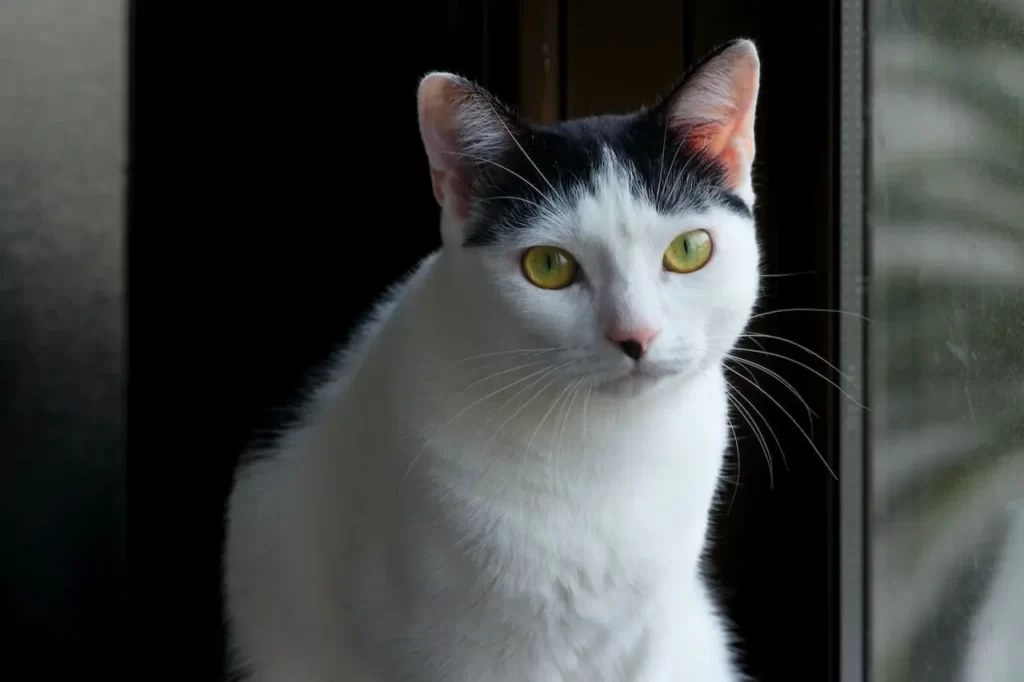Common signs that a kitten has died inside a cat can include prolonged, unproductive labour (over 2 hours of strong contractions with no kitten), foul-smelling dark discharge, sudden loss of foetal movement, marked lethargy, fever, and pain. Any green/black discharge before the first kitten or more than 2 hours between kittens is an emergency. Call a vet immediately if you see these signs; delays can threaten the mother and remaining kittens.
Symptoms of a Dead Kitten Inside a Cat (Quick Guide)
| Symptom | What it may mean | What to do |
|---|---|---|
| Prolonged, strong contractions > 2 hours with no kitten | Placental separation, infection, or a deceased kitten | Emergency: Call a vet immediately; prepare to transport |
| > 2 hours between kittens with ongoing straining | Obstructed labour or retained/deceased kitten | Emergency: Call a vet now; note timings |
| Kitten likely stuck in the birth canal | A possible stuck or deceased kitten is blocking the birth canal | Emergency: Veterinary assessment immediately |
| Sudden loss of foetal movement previously felt | Possible foetal death | Call a vet for advice and imaging (X-ray/ultrasound) |
| Fever, marked lethargy, obvious pain, refusal to eat | Systemic illness, infection, or toxic shock risk | Emergency: Keep warm/quiet; seek urgent care |
| Repeated vomiting during labour | Distress, pain, or complications | Call a vet—especially if paired with other red flags |
| Part of the kitten is visible with no progress for > 10–15 minutes | Kitten is likely stuck in the birth canal | Emergency: Do not pull; call a vet immediately |
| Persistent hard, enlarged abdomen after a kitten is born | Remaining kitten(s) not delivered; possible distress | Call a vet for guidance and possible imaging |
| Strong, unpleasant odour from the vulva | Infection or decomposing foetal tissue | Emergency: Seek veterinary care now |
| Green/black or foul-smelling discharge (especially before the first kitten) | Life-threatening complication | Emergency: Immediate transport to emergency clinic |
How to Know If a Cat Has a Dead Kitten Inside?
We already learned a lot from the symptoms table. Now let’s dive deeper.
Let’s discuss major signs and explore causes.
5 Symptoms of a Dead Kitten Inside a Cat
1. Lack of Fetal Movement
One of the early signs that a kitten may have passed away inside a cat is the absence of fetal movement.
If you previously felt movement or kicking in the mother cat’s abdomen and it suddenly stops, it could be a cause for concern. Monitor the mother cat closely for any changes in fetal activity.
2. Prolonged Labor
Prolonged and unproductive labor can be an indicator of a deceased kitten. If the cat is experiencing difficulty in delivering the remaining kittens or if the labor seems to be dragging on without progress, it is essential to seek veterinary attention promptly.
A deceased kitten may be blocking the birth canal, hindering the delivery process.
3. Abnormal Discharge
Abnormal vaginal discharge is another potential sign of a deceased kitten inside a cat. The discharge may be discolored, foul-smelling, or otherwise abnormal in consistency.
Any noticeable changes in the discharge should be monitored closely, as they may indicate a problem.
4. Lethargy or Distress
A mother cat with a deceased kitten inside her may exhibit signs of discomfort, restlessness, or lethargy. She may appear more subdued or less interested in her surroundings.
Additionally, the cat may display symptoms such as decreased appetite, excessive panting, or vocalization. These behavioral changes should be taken seriously and promptly addressed by a veterinarian.
5. Abnormal Behavior
The mother cat’s behavior can also provide clues about the presence of a deceased kitten. She may engage in excessive grooming of her abdomen, paying particular attention to the area where the kittens are located.
Alternatively, the cat may avoid her nesting area altogether, displaying aversion to the usual spot she prepared for giving birth. These abnormal behaviors may indicate distress or discomfort.
Normal vs. Emergency During Cat Labour
| Situation | Usually Normal | Emergency – Call a Vet |
|---|---|---|
| Mild clear discharge late in pregnancy | Often normal | Foul, dark/green/black, or bad odour |
| Time between kittens | Up to ~1–2 hours with mum calm | >2 hours of strong straining and no kitten |
| Nesting, mild panting | Common | Excessive panting, collapse, severe pain |
| Foetal movement | Can slow near labour | Sudden stop after strong movements + other signs |
| Vomiting | Occasional is possible | Repeated vomiting + lethargy/pain/fever |
| Behaviour | Calm, attentive | Mild, clear discharge late in pregnancy |
What to Do if the Kitten is Dead Inside a Cat?
- Call your vet or emergency clinic – say you suspect a deceased or stuck kitten.
- Keep mum warm, quiet, and hydrated. Don’t give meds.
- Note timings: start of labour, last kitten born (if any), discharge colour/smell.
- Prepare for transport (carrier, towels).
- Do not pull a kitten without veterinary guidance.
How Long Can a Cat Survive with a Dead Kitten Inside?
There’s no safe waiting window; risks (infection, sepsis, uterine rupture) rise quickly. Treat as urgent and seek veterinary care immediately.
Stuck Kitten vs. Stillborn: What’s the Difference?
- Stuck kitten: mum strains, cries; part of the kitten or sac may be visible; no progress.
- Stillborn: delivered but no signs of life; mum may lick, but the kitten doesn’t respond.
Both require vet advice—a stuck kitten is an emergency; a stillborn still warrants a check for remaining kittens/infection.
Read Also
- How Long Does Dry Cat Food Last
- How To Make a Homemade Dog Bite Sleeve? Easy DIY
- Can cats eat sausage?
How to Take Care of a Pregnant Cat to Avoid the Death of Kittens Before Birth?
Taking care of a pregnant cat is crucial to ensure the health and well-being of both the mother and her kittens.
Here are some essential steps to help you provide the best care and reduce the risk of complications or the death of kittens before birth:
1. Veterinary Care
Schedule a visit to the veterinarian as soon as you suspect your cat is pregnant. Your vet will confirm the pregnancy, estimate the stage of gestation, and provide guidance on proper care. They may also perform necessary tests and vaccinations to ensure the mother cat’s health.
2. Maintain a Balanced Diet
Feed your pregnant cat a high-quality, balanced diet formulated for pregnant and nursing cats. Consult with your veterinarian to determine the appropriate type and amount of food. Provide access to fresh water at all times and avoid giving her any medication or supplements without veterinary approval.
3. Provide Comfortable Environment
Create a quiet, comfortable space for your pregnant cat to nest and give birth. Provide a cozy bed, preferably in a separate room away from noise and disturbances. Ensure the area is warm, well-ventilated, and easily accessible for the cat.
4. Keep Your Cat Active
Encourage gentle exercise and play for your pregnant cat, but avoid excessive physical exertion. Provide interactive toys and opportunities for mental stimulation. However, be mindful of the cat’s comfort and monitor her activity levels.
5. Regular Check-ups:
Continue regular veterinary check-ups throughout the pregnancy to monitor the mother’s health and the progress of the kittens. Your vet can provide guidance on potential complications and intervene if necessary.
6. Monitor Your Cat Regularly
Observe your pregnant cat closely for any changes in behavior, appetite, or physical appearance. Look for signs of distress, discomfort, or abnormalities. Notify your vet promptly if you notice anything concerning.
7. Reduce Stress
Reduce stressors in your cat’s environment, as excessive stress can have negative effects on pregnancy. Keep the living area calm, avoid sudden changes, and limit exposure to loud noises or unfamiliar animals.
8. Preventive Measures
Keep your pregnant cat indoors to protect her from potential dangers, such as fights with other animals or exposure to infectious diseases. Prevent contact with potentially harmful substances, such as toxic plants, chemicals, or medications.
9. Prepare Your Cat for Delivery
As the due date approaches, help your cat prepare for delivery. Provide nesting materials like blankets or towels for her to create a comfortable birthing area. Educate yourself about the signs of labor and be prepared to assist if necessary.
Frequently Asked Questions
What happens if my cat has dead kittens inside her?
It’s dangerous; infection and sepsis can develop. Seek emergency veterinary care for imaging (X-ray/ultrasound) and safe removal.
How do I know if my cat still has kittens inside?
Ongoing strong contractions without a kitten, persistent abdominal hardness, or continued nesting/straining. If >2 hours pass with straining, call a vet.
What does a mother cat do with a dead kitten?
Some mothers lick/clean the kitten, some ignore, and some attempt to bury or move it. Do not let her consume it; call your vet for guidance and safe handling.
What to do with a dead kitten after birth?
Use gloves, place the kitten in a clean bag/box, keep cool, and call your vet. They’ll advise on cremation, burial laws, or a post-mortem if recommended.
How to tell if a kitten is stillborn?
No breathing, movement, or response after drying/stimulation; blue/grey gums; limp body. Even if stillborn, mum may need vet assessment for retained kittens.
Conclusion
While the occurrence of a deceased kitten inside a cat is uncommon, pet owners need to be aware of the possible signs.
Recognizing these indicators and seeking prompt veterinary care can help ensure the health and well-being of the mother cat and any surviving kittens.
Remember, consulting a veterinarian is essential in situations like these, as they possess the expertise and knowledge to provide the appropriate advice and treatment needed during this difficult time.





